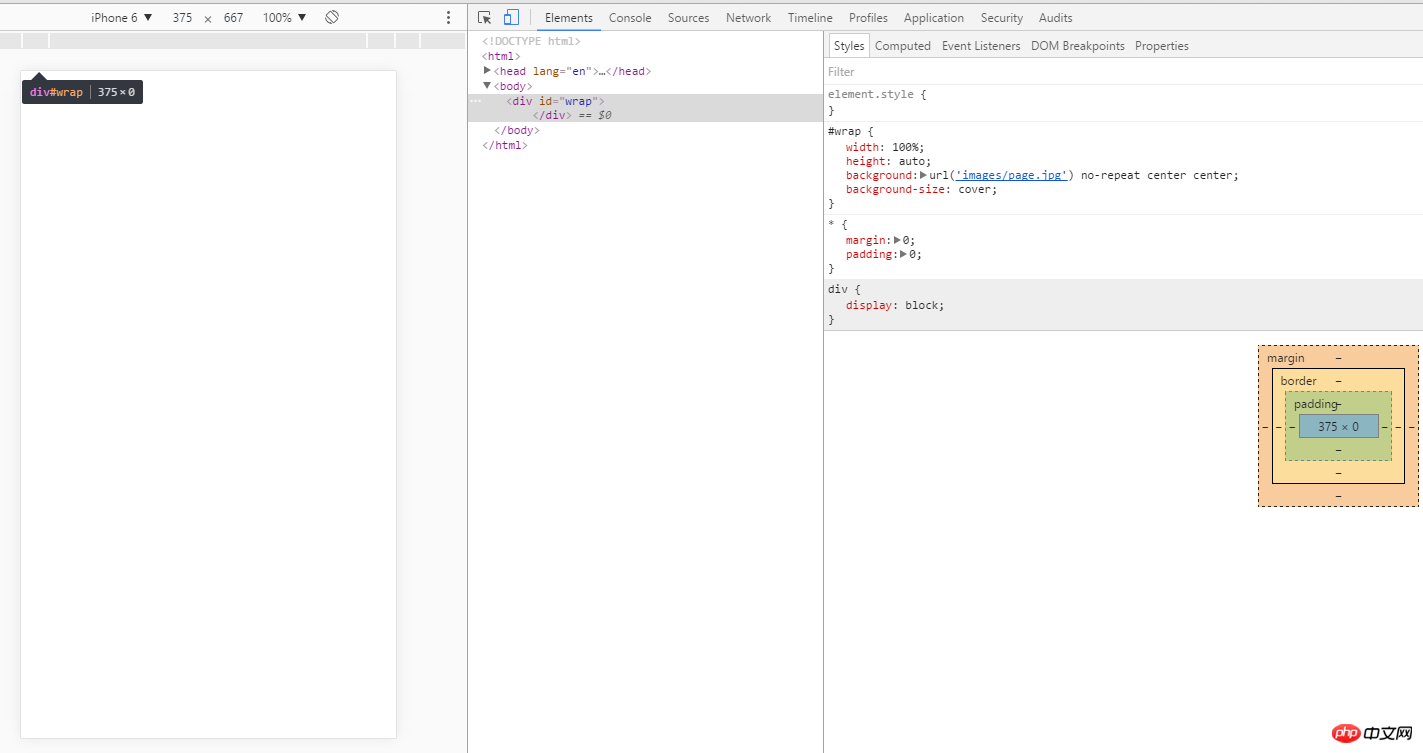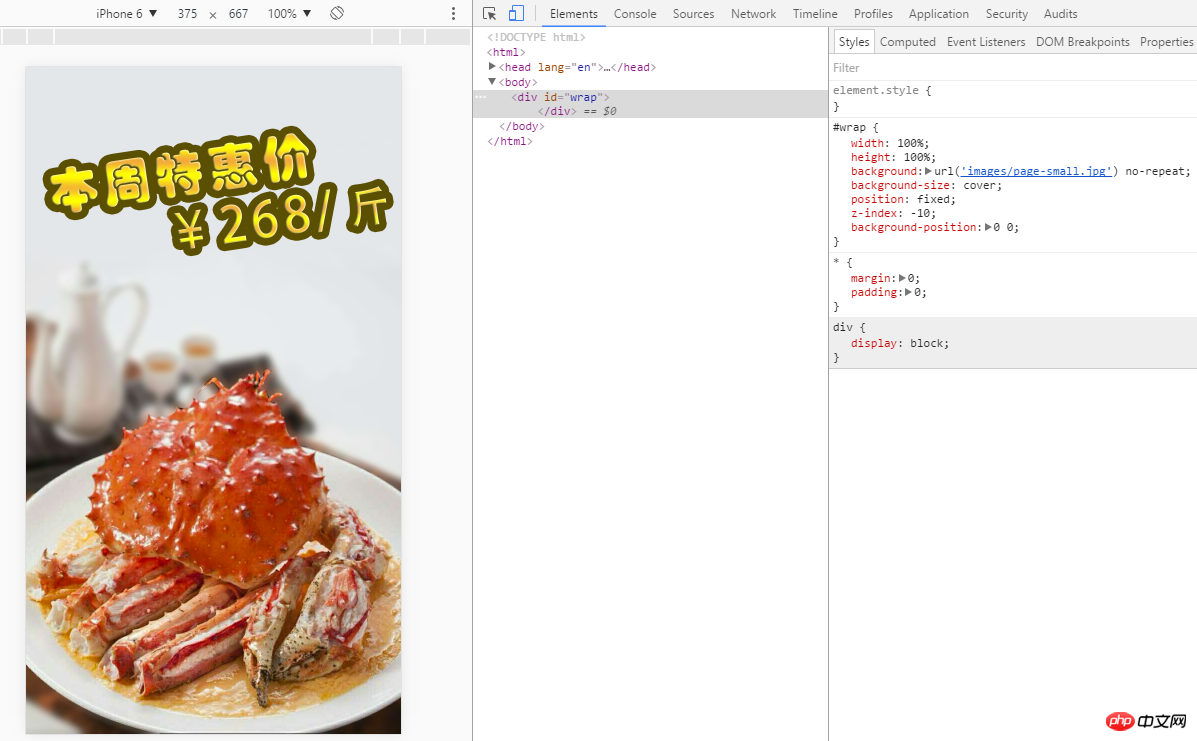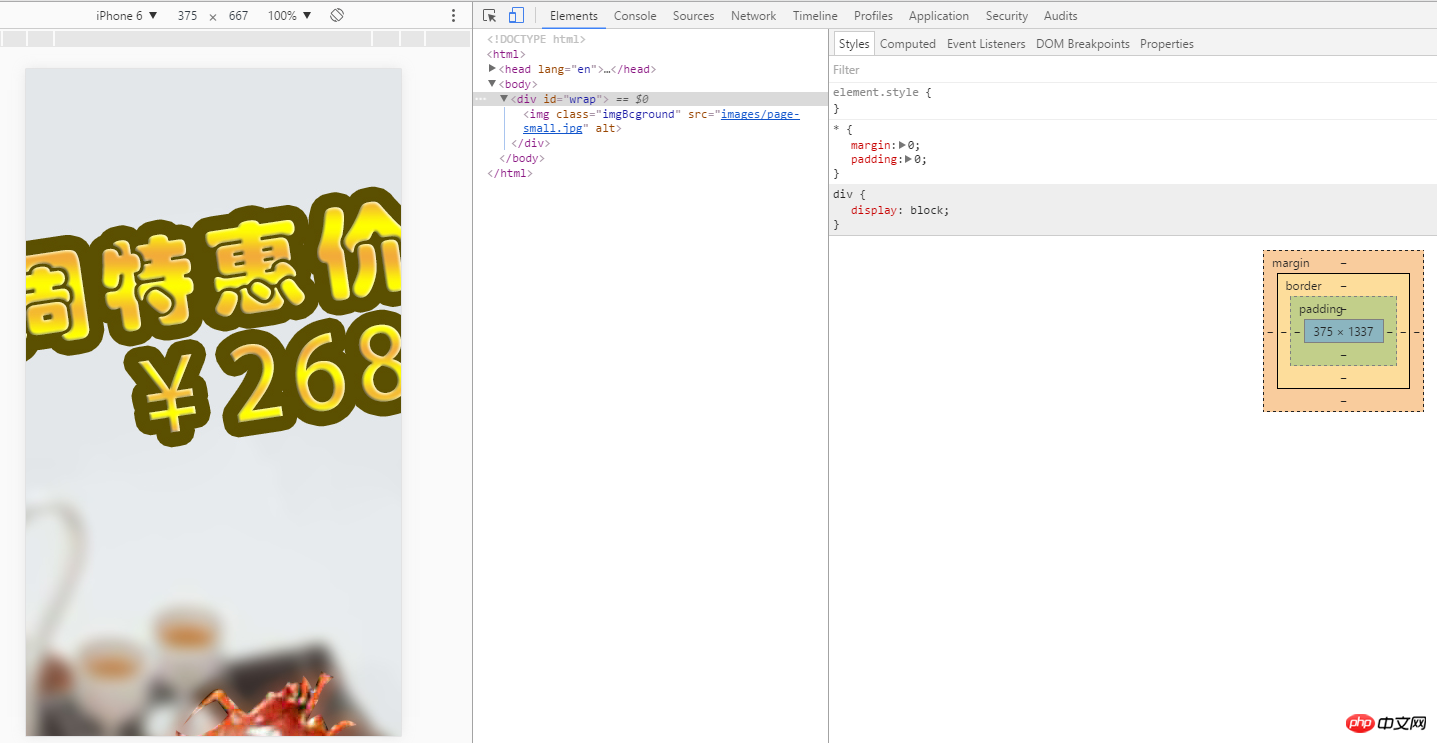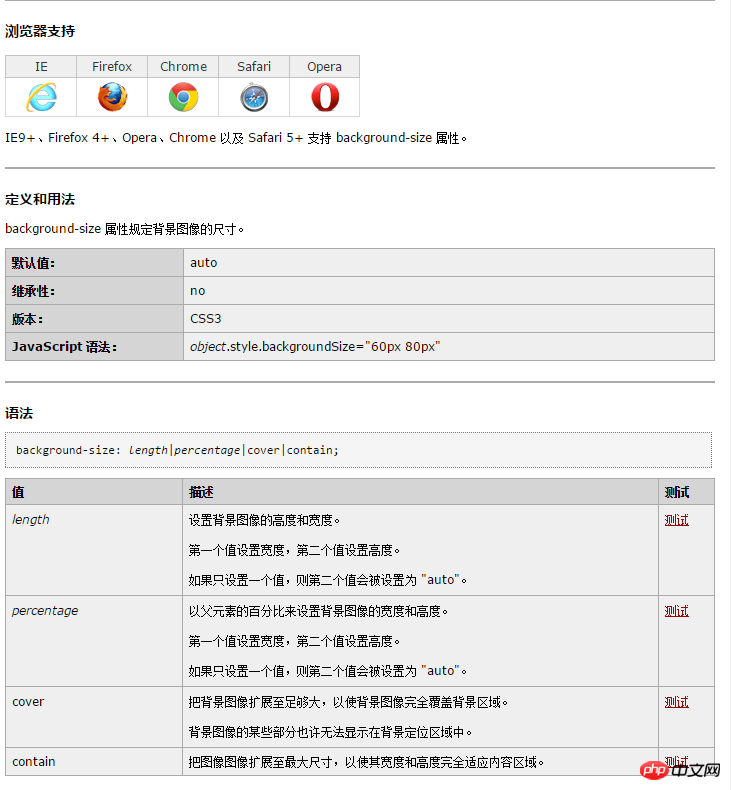 Web Front-end
Web Front-end
 CSS Tutorial
CSS Tutorial
 How to add a background image to an element of unknown width and height using css
How to add a background image to an element of unknown width and height using css
How to add a background image to an element of unknown width and height using css
Add a background image to a certain element of the page. When the specific width and height are not specified, the effect cannot be displayed.
1. Add a background image
HTML code:
<!DOCTYPE html>
<html>
<head lang="en">
<meta charset="UTF-8">
<meta name="viewport" content="width=device-width,initial-scale=1.0,minimum-scale=1.0,maximum-scale=1.0,user-scalable=no"/>
<meta name="format-detection" content="telephone=no"/>
<meta name="format-detection" content="email=no"/>
<title></title>
<style>
*{margin:0; padding:0;}
#wrap{
width:100%;
height:auto;
background:url('images/page.jpg') no-repeat center center;
background-size:cover;
}
</style>
</head>
<body>
<div id="wrap">
</div>
</body>
</html>We can take a look at the screenshot of the page effect:

#In order to adapt to the screen size of different terminals, we cannot write the width and height to death, so what should we do? You can take the following methods:
HTML code:
<!DOCTYPE html>
<html>
<head lang="en">
<meta charset="UTF-8">
<meta name="viewport" content="width=device-width,initial-scale=1.0,minimum-scale=1.0,maximum-scale=1.0,user-scalable=no"/>
<meta name="format-detection" content="telephone=no"/>
<meta name="format-detection" content="email=no"/>
<title></title>
<style>
*{margin:0; padding:0;}
#wrap{
width:100%;
height:100%;
background:url('images/page-small.jpg') no-repeat;
background-size:cover;
position:fixed;
z-index:-10;
background-position:0 0;
}
</style>
</head>
<body>
<div id="wrap">
</div>
</body>
</html>Let’s take a look at the page effect:

Mobile page effect

Note: If you remove the div and add the style directly to the body, it can be displayed on PC browsers and Android phones, but it cannot be displayed on Apple phones. After many repeated tests, this bug is reproduced (if any friends encounter the correct solution to this kind of problem, please give us advice!)

(The picture above is for an Apple model. Screenshot)
2. Add a background image through the img tag
HTML code:
<!DOCTYPE html>
<html>
<head lang="en">
<meta charset="UTF-8">
<meta name="viewport" content="width=device-width,initial-scale=1.0,minimum-scale=1.0,maximum-scale=1.0,user-scalable=no"/>
<meta name="format-detection" content="telephone=no"/>
<meta name="format-detection" content="email=no"/>
<title></title>
<style>
*{margin:0; padding:0;}
</style>
</head>
<body>
<div id="wrap">
<img class="imgBcground lazy" src="/static/imghw/default1.png" data-src="images/page-small.jpg" alt="">
</div>
</body>
</html>When checking the page effect, I found that the image is presented at 100% actual size, which is obviously not the case. The effect we want

is very similar to the above example, we just need to modify it slightly
HTML code:
<!DOCTYPE html>
<html>
<head lang="en">
<meta charset="UTF-8">
<meta name="viewport" content="width=device-width,initial-scale=1.0,minimum-scale=1.0,maximum-scale=1.0,user-scalable=no"/>
<meta name="format-detection" content="telephone=no"/>
<meta name="format-detection" content="email=no"/>
<title></title>
<style>
*{margin:0; padding:0;}
.imgBcground{
display:block;
width:100%;
height:100%;
position:fixed;
z-index:-10;
}
</style>
</head>
<body>
<div id="wrap">
<img class="imgBcground lazy" src="/static/imghw/default1.png" data-src="images/page-small.jpg" alt="">
</div>
</body>
</html>The page effect can be viewed under different simulation models:

Regarding the background-size attribute, W3C defines it like this

The above is the detailed content of How to add a background image to an element of unknown width and height using css. For more information, please follow other related articles on the PHP Chinese website!

Hot AI Tools

Undresser.AI Undress
AI-powered app for creating realistic nude photos

AI Clothes Remover
Online AI tool for removing clothes from photos.

Undress AI Tool
Undress images for free

Clothoff.io
AI clothes remover

AI Hentai Generator
Generate AI Hentai for free.

Hot Article

Hot Tools

Notepad++7.3.1
Easy-to-use and free code editor

SublimeText3 Chinese version
Chinese version, very easy to use

Zend Studio 13.0.1
Powerful PHP integrated development environment

Dreamweaver CS6
Visual web development tools

SublimeText3 Mac version
God-level code editing software (SublimeText3)

Hot Topics
 How to correctly display the locally installed 'Jingnan Mai Round Body' on the web page?
Apr 05, 2025 pm 10:33 PM
How to correctly display the locally installed 'Jingnan Mai Round Body' on the web page?
Apr 05, 2025 pm 10:33 PM
Using locally installed font files in web pages Recently, I downloaded a free font from the internet and successfully installed it into my system. Now...
 How to select a child element with the first class name item through CSS?
Apr 05, 2025 pm 11:24 PM
How to select a child element with the first class name item through CSS?
Apr 05, 2025 pm 11:24 PM
When the number of elements is not fixed, how to select the first child element of the specified class name through CSS. When processing HTML structure, you often encounter different elements...
 Does H5 page production require continuous maintenance?
Apr 05, 2025 pm 11:27 PM
Does H5 page production require continuous maintenance?
Apr 05, 2025 pm 11:27 PM
The H5 page needs to be maintained continuously, because of factors such as code vulnerabilities, browser compatibility, performance optimization, security updates and user experience improvements. Effective maintenance methods include establishing a complete testing system, using version control tools, regularly monitoring page performance, collecting user feedback and formulating maintenance plans.
 How to make multiple lines of text aligned and underscore with CSS?
Apr 05, 2025 pm 08:00 PM
How to make multiple lines of text aligned and underscore with CSS?
Apr 05, 2025 pm 08:00 PM
How to make multiple lines of text aligned and underscore with CSS? In daily web design, we often need to style multiple lines of text in special styles...
 How to compatible with multi-line overflow omission on mobile terminal?
Apr 05, 2025 pm 10:36 PM
How to compatible with multi-line overflow omission on mobile terminal?
Apr 05, 2025 pm 10:36 PM
Compatibility issues of multi-row overflow on mobile terminal omitted on different devices When developing mobile applications using Vue 2.0, you often encounter the need to overflow text...
 Is H5 page production a front-end development?
Apr 05, 2025 pm 11:42 PM
Is H5 page production a front-end development?
Apr 05, 2025 pm 11:42 PM
Yes, H5 page production is an important implementation method for front-end development, involving core technologies such as HTML, CSS and JavaScript. Developers build dynamic and powerful H5 pages by cleverly combining these technologies, such as using the <canvas> tag to draw graphics or using JavaScript to control interaction behavior.
 Why does negative margins not take effect in some cases? How to solve this problem?
Apr 05, 2025 pm 10:18 PM
Why does negative margins not take effect in some cases? How to solve this problem?
Apr 05, 2025 pm 10:18 PM
Why do negative margins not take effect in some cases? During programming, negative margins in CSS (negative...
 Is the threshold for H5 page production high?
Apr 05, 2025 pm 11:45 PM
Is the threshold for H5 page production high?
Apr 05, 2025 pm 11:45 PM
The threshold for making H5 pages is neither high nor low, depending on the goal. It is easier to make simple static pages, you only need to master the basic knowledge of HTML and CSS; it is relatively high to create pages with strong interactive and rich features, and you need to have in-depth knowledge of HTML, CSS, JavaScript, front-end frameworks, performance optimization and compatibility.





